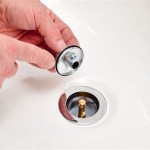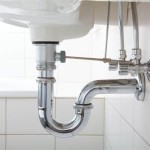Does A Fresh Egg Sink Or Float In Water? Understanding Egg Freshness Through Buoyancy
The question of whether a fresh egg sinks or floats in water is a common query with a relatively straightforward answer. The buoyancy test, as it's often called, is a simple yet effective method for determining the freshness of an egg. However, understanding the science behind why an egg behaves the way it does in water requires a closer look at the egg's structure, its internal composition, and the changes that occur over time.
An egg's shell is porous, allowing air and moisture to pass through it. Inside the shell, the egg white (albumen) and yolk are contained. As an egg ages, several key changes occur. Water evaporates through the pores in the shell, leading to a reduction in the egg's overall weight. Simultaneously, carbon dioxide escapes and is replaced by air, increasing the size of the air cell located at the wider end of the egg. This air cell plays a crucial role in the egg's buoyancy.
The fundamental principle behind buoyancy is Archimedes' principle, which states that the buoyant force on an object submerged in a fluid is equal to the weight of the fluid displaced by the object. An object will float if the buoyant force is greater than the object's weight, and it will sink if the object's weight is greater than the buoyant force. In the context of an egg in water, its density relative to the water's density determines whether it sinks or floats.
The Density Dilemma: Egg Composition and Buoyancy
The density of an egg is primarily determined by the ratio of its mass to its volume. A fresh egg has a relatively high density due to its internal composition. The albumen and yolk are denser than water. When a freshly laid egg is placed in water, its overall density is greater than that of the water, causing it to sink. The limited amount of air inside a fresh egg contributes minimally to its buoyancy.
Over time, the density of the egg changes. As water evaporates and is replaced by air within the egg, the overall mass decreases while the volume remains relatively constant. This decrease in mass leads to a reduction in the egg's density. The increasing size of the air cell further contributes to the egg's buoyancy. The egg becomes less dense, and as its density approaches that of water, it may start to tilt upwards and eventually float. This change in density is a direct consequence of the aging process and the exchange of gases and moisture through the porous shell.
Furthermore, the composition of the albumen also changes over time. The thick albumen in a fresh egg thins out as the egg ages. This thinning is due to the breakdown of proteins and the release of carbon dioxide. While this change in albumen consistency doesn't directly impact the overall density calculation as much as water loss and air cell expansion, it does contribute to the overall characteristics of an aging egg.
The water's salinity affects the buoyancy test. Adding salt to the water increases its density. An egg that might sink in plain water could float in salt water. This is because the weight of the water displaced by the egg is greater in salt water than in plain water, increasing the buoyant force. Therefore, it’s important to use plain tap water for an accurate assessment of egg freshness using the buoyancy test.
Interpreting the Buoyancy Test: Sink, Tilt, or Float
The buoyancy test provides a visual indication of an egg's freshness based on its behavior in water. A fresh egg will typically sink and lie flat on its side at the bottom of the container. This indicates that the egg is dense and contains a minimal amount of air. Such egg is ideal for most cooking applications, especially those where the egg's structure and binding properties are crucial, such as baking.
If an egg sinks but stands on one end, with the other end tilted upwards, it suggests that the egg is somewhat older but still likely usable. The air cell has expanded slightly, causing the egg to orient itself vertically in the water. While it may not be as fresh as an egg that lies flat, it can still be used for scrambling or other cooking methods where the structural integrity is less critical.
An egg that floats on the surface of the water is considered to be old. The air cell has expanded significantly, making the egg buoyant. While it is generally recommended to discard floating eggs due to the potential for bacterial contamination and undesirable flavors, a more conservative approach is to crack the egg open into a separate bowl and inspect it for any off odors or discoloration before discarding it. However, caution is advised, and prioritizing safety is paramount.
It's important to note that variations in egg size and shell thickness can slightly influence the results of the buoyancy test. A smaller egg, even when fresh, might appear to be less dense due to its smaller volume. Similarly, eggs with thicker shells may retain moisture more effectively, affecting their density and buoyancy over time. These are minor variations that do not invalidate the test but should be considered in conjunction with the other factors that influence the results.
Beyond Buoyancy: Complementary Methods for Assessing Egg Freshness
While the buoyancy test is a quick and easy method for assessing egg freshness, it shouldn't be the sole criterion for determining an egg's usability. Other methods, such as the crack test and the smell test, can provide additional information. The crack test involves cracking the egg into a flat surface and observing the appearance of the albumen and yolk. A fresh egg will have a thick, cloudy albumen that stands tall around the yolk. An older egg will have a thin, watery albumen that spreads out considerably. The yolk of a fresh egg will be round and firm, while the yolk of an older egg will be flatter and more easily broken.
The smell test is perhaps the most reliable indicator of egg spoilage. A spoiled egg will have a distinctly unpleasant sulfurous odor, even if it appears normal visually. If an egg smells bad, it should be discarded immediately, regardless of its appearance or its performance in the buoyancy test. Bacterial contamination is a common cause of egg spoilage, and the presence of a foul odor indicates that the egg is unsafe to consume.
Candling is another method used by commercial egg producers to assess egg quality. Candling involves shining a bright light through the eggshell to visualize the internal contents. This allows for the detection of imperfections such as blood spots, cracks, and air cell size. While candling requires specialized equipment, it provides a more detailed assessment of egg quality than the buoyancy test or the crack test.
Additionally, paying attention to the "sell-by" or "expiration" date printed on the egg carton is crucial. These dates are intended to provide consumers with an estimate of how long the eggs will retain their optimal quality. While eggs may still be safe to consume after the sell-by date, their quality and freshness may decline over time. Proper storage, such as keeping eggs refrigerated in their original carton, can help to extend their shelf life.
In conclusion, the buoyancy test provides a valuable insight into egg freshness by revealing changes in density related to water loss and air cell expansion. When combined with other assessment methods, such as visual inspection and the smell test, it provides a comprehensive evaluation of an egg's suitability for consumption. Consistent monitoring and responsible decision-making related to egg storage and usage contribute to food safety and overall cooking quality.

Why Bad Eggs Float And Good Sink

Why Do Old Eggs Float Scienceabc

Fresh Egg Test Sink Or Float
An Egg Sinks In Fresh Water But Floats A Strong Salt Solution Why Quora

How To Tell If An Egg Is Fresh Science S

Egg Float Test

Floating Egg Science Experiment Using Salt Sugar Saline Water

How To Tell If Your Eggs Are Off Australian

Egg Float Test Myth Is It Accurate

How Salty Does The Sea Have To Be For An Egg Float







